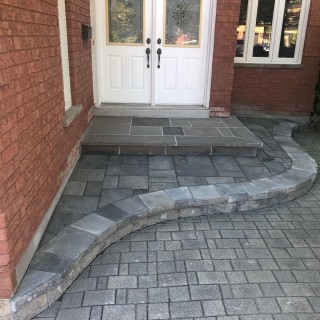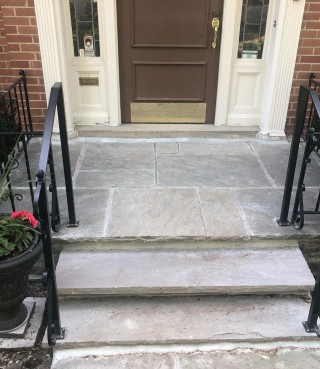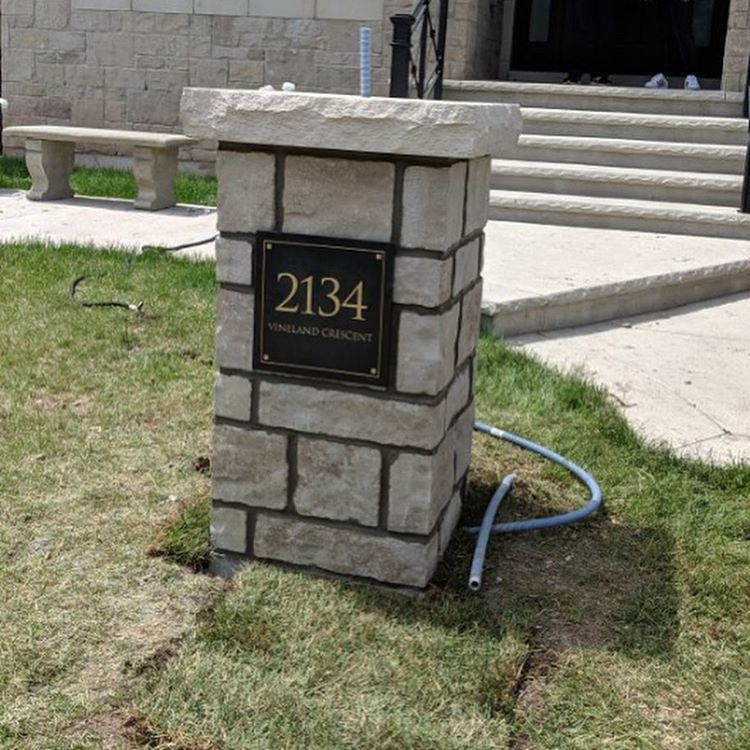Stonework: Six Tips for Planning Walkways and Pathways
A practical and appealing component of a landscaping project or garden escape should include the incorporation of some form of a stone walkway.
There are many varieties of natural quarried, and man-made stone products available for the Toronto market. Design possibilities are virtually limitless.
There are a few important design considerations when planning to install a stone walkway.
Key among these should include determining what the terrain conditions are for proper preparation, in advance of laying any stone.
Rough terrain versus lawn may require greater effort to excavate the ground in advance of installing root barriers and screening materials, which form the foundation on which the stonework may be laid.
The second consideration is the size of the walkway or pathway. As an example; a path should likely be wide enough to accommodate two adults walking side by side at a minimum. If the path will be traveled over in a golf cart, extra width may be required.
The third consideration is mapping/ laying out the route of the pathway. Very linear designs compliment both modern and contemporary architecture and garden designs. Stone walkways can be designed to have “destination” stopping points where outdoor art, water features, or sitting areas with benches, can be incorporated, Such planning creates interest, and serves to feature key elements of outdoor living space.
Winding stone pathways can help break up a boxy appearance of a property, and can often work seamlessly to blend transitions from garden beds to sitting or play, or recreation areas.
As part of the planning process; one must consider what the intended purposes of the overall space will require. For example; one zone along a stone walkway may lead to a barbeque and dining area, located close to the home. The pathway may require flaring to meet an existing patio or deck space.
When thinking about the use of a stone pathway; consider the integration of lighting solutions which make the pathway safe and more accessible for use at night. Such lighting features also create an ambience along the pathway and can accentuate associated gardens and planting materials.
If incorporating lighting as part of a stone pathway, the mason may need to be aware of such design considerations, because electrical service and conduits which may have to be located below grade; will need to be installed as part of the preparation procedure.
In addition to noting the previously discussed design details on paper; it is a good idea to mark out planned stone pathways and patios using strings and stakes or using spray paint. This allows the property owner to actually visualize the result, and make adjustments to the size and design prior to investment in the project. For some people who have difficulty visualizing sketches into reality; this method helps them to achieve confidence in their decisions.
Once the basic layout has been determined; the next step is to make a selection of stone choices for the project. Ideally, the products selected should appear seamless in terms of their relationship to the architecture of the dwelling.
As an example; a natural wood-sided home may suit a rough cut fieldstone pathway; where a modern design may be better suited to square-cut pavers. To maintain heritage; locally sourced stone materials
which are native to the particular region, can make the installation interesting.
As important as the stone selection, can be the pattern that the stone may be laid in. Typically natural materials need to be cut and chiseled to fit in a tight-knit pattern. This can be more labour intensive  than using square-cut materials. Often stonework requires being set in a bed of mortar, particularly in high traffic areas such as patios and where fixtures such as hot tubs or stone pizza ovens may be situated.
than using square-cut materials. Often stonework requires being set in a bed of mortar, particularly in high traffic areas such as patios and where fixtures such as hot tubs or stone pizza ovens may be situated.
Therefore, it is necessary to obtain various material samples and several pieces of each type, so one may view differences in shading, or in the event, two different stone materials may be used. Popular is to border a stone walkway with a soldier course (border); with a stone colour that contrasts the field surface area. An example can be stone which is lighter grey in the field, with dark grey stone used as a border, or strategically placed within the field design, to make the appearance “pop”.
Once these rudiments have been determined, it becomes easier for the mason and his team to price the work accurately, and execute the project to a highly satisfactory result. When requesting the services of a qualified stone mason; being able to demonstrate photos of a concept or products one prefers, helps the mason to picture the vision of the client. Of course, stone masons can supply valuable guidance and technical understanding to the process.
The key to the best result; is selecting a highly skilled mason to complete the project. It is important to note that stonework requires heavy lifting, proper site preparation, the correct depth of base screening materials, and a sufficient supply of materials which allows the mason to select the right pieces which fit a created random bond pattern using natural stone. Material costs can often be less if electing to use cultured stone products.
The results will be stunning and endure for decades when a stone walkway has been installed by an artisan stone mason. Such hard-scaping can provide a dollar-for-dollar return on investment. There is certainly no doubt that curb appeal and enjoyment of the outdoor living space will be greatly enhanced when making such an investment.
To learn more about Toronto stone walkways and related stone for living environments; contact www.avenueroadmasonry.com or Facebook or Youtube.

